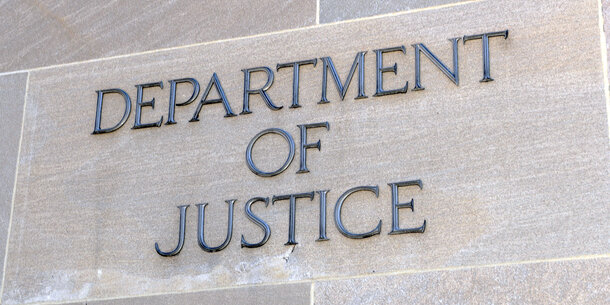A year ago, we reviewed progress made by the Biden administration toward building a fairer and more effective criminal justice system, as well as missed opportunities. Here we outline major developments since then, including setbacks and steps in the right direction.
Retrenchment on the Federal Death Penalty
The administration made little to no progress on one campaign pledge: ending the death penalty. To be sure, the Department of Justice took some early steps: withdrawing requests for it in seven cases, commencing a still-incomplete review of death penalty protocols, and announcing a moratorium on further federal executions.
But all of these changes could be erased by the next administration, which is exactly what happened after President Obama’s moratorium, opening the door for President Trump to execute 13 people in just four years. Today, the stakes remain high as there are 44 people currently on federal death row.
More troublingly, recent events suggest that President Biden may have reconsidered his stance. The DOJ is seeking the death penalty in high-profile cases and recently confirmed that it will continue to do so in another.
Limited Progress on Prison Reform
On August 2, 2022, Colette Peters was sworn in as the new director of the Bureau of Prisons, taking the helm as the agency faces serious allegations of sexual abuse, a congressional corruption inquiry, concerns raised by the Justice Department’s Inspector General regarding inadequate medical care, and a dire staffing shortage. Peters has committed to “transforming institutional culture” within the agency, and there is reason to believe she may succeed. As head of the Oregon Department of Corrections, she dismantled the state’s death row and led a series of reforms designed to reduce reliance on segregated housing.
Yet Peters has inherited decades of dysfunction within the Bureau of Prisons. In addition to more direct threats to the agency’s operations, implementation remains incomplete for the First Step Act, a bipartisan sentencing and prison conditions reform bill enacted in 2018. Major improvements to the law’s prison reforms were announced in 2021. But a key tool for evaluating the supposed recidivism risk of people in federal prison remains tainted by racial bias due to an algorithm that gives undue weight to factors associated with over-policing and drug criminalization. As a result, 47 percent of assessed Black people in federal prison are classified as having a “high” risk of recidivism, versus 34 percent of the total assessed population. And staffing shortages meant some people in prison did not immediately receive credits they were due under the law’s incentive program or were unable to enroll in programming to earn credits.
Importantly, both issues appear to be on the department’s radar: a recent BOP policy statement should help reduce confusion around the act’s credit system, and the DOJ pledged in April to continue to “consider all legally permissible options” for reducing racial disparities in the act’s risk assessment tool.
Last, Biden issued an executive order in January 2021 directing the attorney general not to renew Justice Department contracts with privately operated criminal detention facilities. But the order applies only to Bureau of Prison facilities and not to U.S. Immigration and Customs Enforcement’s contracts with for-profit firms to manage immigration detention facilities. In December 2022, the Bureau of Prisons announced that it had finally ended all contracts with privately managed prisons. But questions remain concerning how to reduce the for-profit sector’s extensive foothold in immigration detention centers, now estimated to be a $3 billion dollar industry.
Notable Nominations and Confirmations
President Biden has used nominations to reshape or revitalize the administration of federal law. Most notably, Biden appointed Ketanji Brown Jackson to the Supreme Court. She is the first Black woman to sit on the high court and also a former federal public defender, which is a rarity in the federal judiciary.
The president’s nominees for the lower federal courts continue to be similarly diverse. As of September 2022, he had appointed a record number of former public defenders to federal appeals courts. Approximately 76 percent of Biden’s nominees so far have been women, and 65 percent are nonwhite.
Additionally, the Senate recently confirmed the president’s nominees to the U.S. Sentencing Commission, giving the agency a quorum for the first time since 2019. Starting in the spring, the commission will at long last be able to set policy on important issues such as the scope of federal compassionate release.
Updates to DOJ Charging Policy
Federal prosecutors enjoy broad discretion over what charges to file in a criminal case, a decision that dictates everything from a defendant’s likely sentencing exposure to the course of plea negotiations. Previous attorneys general have used that discretion to shape sentencing policy. In 2013, then-Attorney General Eric Holder directed prosecutors to avoid triggering mandatory minimums in some lower-level drug cases. Four years later, then-Attorney General Jeff Sessions reversed him.
In December 2022, Attorney General Merrick Garland issued his own directives, limiting the application of mandatory minimum penalties, especially in drug cases — a welcome step toward reducing excessive sentences in the federal system. Garland’s memorandums stated that in all cases, mandatory minimums should generally be reserved for occasions where conviction on other charges would not, among other factors, “sufficiently reflect the seriousness of the defendant’s criminal conduct.”
Further, in drug cases potentially implicating quantity-based mandatory minimums — for example, the five-year mandatory minimum for trafficking more than 28 grams or more of crack cocaine — prosecutors should avoid “triggering” those penalties if the defendant’s conduct did not involve violence or any of a list of other aggravating factors.
Finally, Garland wrote that prosecutors should use their discretion to “promote the equivalent treatment of crack and powder cocaine offenses,” short-circuiting a statutory system that has for years subjected people convicted of crack cocaine offenses to much harsher penalties. This policy, Garland explained, reflects the Justice Department’s commitment to eliminating the sentencing disparity between crack and powder cocaine. Legislation to end that disparity, the EQUAL Act, stalled in the Senate after passing the House 361–66.
Limited Progress on Clemency
After over a year of inaction, in April 2022, President Biden granted 3 pardons and 75 commutations, the first of his presidency. Abraham Bolden Sr., the first Black Secret Service member, was among those pardoned — nearly 60 years after his conviction for what Bolden claimed were racist and retaliatory charges. Other beneficiaries were serving lengthy prison terms for nonviolent drug-related charges, and many would have faced lighter sentences today under the First Step Act. Many commutations went to people serving sentences on home confinement under the expanded authority described above.
Biden granted another six pardons at the end of 2022. Five of the six people pardoned were convicted of minor drug- and alcohol-related crimes decades earlier, and all recipients had been out of prison for years at the time of their pardons.
In November 2022, the president also took a bolder step, pardoning all convictions for simple marijuana possession under federal and District of Columbia law. The text of the pardon does not name recipients, but it directs the attorney general to develop an application form and “administer and effectuate the issuance of certificates of pardon to eligible applicants.” Per the White House, as many as 6,500 people could be affected.
While sweeping, this pardon has limitations. Notably, it does not apply to people convicted of distributing or selling cannabis. It does not cut short any prison terms as no eligible people were incarcerated at the time of the order. And it affects a vanishingly small portion of federal drug enforcement. In 2017, for example, just 92 people were sentenced for marijuana possession, out of approximately 20,000 drug convictions.
That said, President Biden’s categorical pardon is a step forward for two reasons. First, Biden urged governors to follow his example by pardoning those charged with low-level cannabis crimes in their states — and at least one has now done so: in November Oregon’s Kate Brown announced that people convicted of simple marijuana possession would be pardoned, affecting an estimated 45,000 people. Further, in December, Connecticut’s Ned Lamont announced that “thousands” of low-level cannabis convictions would be automatically cleared on January 1, 2023 — though this relief is pursuant to legislation passed in 2021.
Second, the form of the pardon — naming a category of people to benefit rather than a list of individuals — is a potential sea change in federal clemency and could lead to further sweeping actions to correct injustices in federal sentencing law. For example, the president could (and should) use the same approach to, through commutation, reduce the sentences of people who might benefit from changes in law, like some sections of the First Step Act. Doing so could help the many individuals, especially Black people and other people of color, who have been punished disproportionately through federal drug policies.
Such bolder action is overdue. There is a backlog of over 18,000 clemency petitions. Given the current pace of clemency grants, it is unlikely the White House will work through those petitions without structural reform to the clemency system itself, which we have recommended in the past.
Mixed Record on Immigration Detention
Last year, we urged President Biden to take further steps to decrease the number of undocumented people detained and reduce the immigration system’s heavy reliance on for-profit detention.
In its FY 2023 budget, the administration sought funding for 25,000 ICE detention beds, down from 34,000, and requested an $87 million increase for its Alternatives to Detention program. ICE increasingly relies on this program, in which undocumented individuals are monitored in the community in lieu of detention. Today, the program oversees more than 343,000 families and single individuals, up from 83,186 in September 2019.
Yet the administration continues to depend heavily on detention. While the number of people in immigration detention facilities remains far below pre-pandemic highs, the population has rebounded from a low of 13,000 in February 2021 to 30,000 as of November 2022. And detention conditions continue to be poor. In just one example, in March, the inspector general for the Department of Homeland Security recommended “immediate” relocation for all detainees housed at the Torrance County Detention Facility in New Mexico due to “excessive and avoidable unsanitary conditions,” such as clogged toilets, mold, and nonfunctioning sinks.
Nor will a shift to monitoring remove the perverse incentives created by for-profit correctional firms. Companies that operate private prisons also have a strong foothold in the electronic monitoring market. For example, BI Incorporated, a subsidiary of private prison operator GEO Group, was awarded a $2.2 billion federal contract in 2020 to electronically monitor immigrants waiting for their court hearings.
New Investments in Community Violence Interventions
While the president has limited control over state and local crime rates, federal funding can guide investment in new and promising ways to address crime.
Toward that end, as part of its overall crime reduction strategy, the Biden administration has continued to support community violence intervention programs, known as CVIs. These are organizations that aim to break cycles of violence through social programming or other interventions and are led and staffed by people from the communities they serve — often people with personal experiences with violence, incarceration, or both. Unfortunately, while the amount of funding available to CVIs grew, it is difficult to determine how much federal money reached those organizations most in need.
A historic amount of money is now theoretically available to CVIs. Examples include $2 billion in American Rescue Plan funds already spent on nonpolice public safety initiatives, including some CVIs. There is also $250 million available through June 2022’s Bipartisan Safer Communities Act, which already helped fund $100 million in grants to organizations and cities operating CVIs. And $50 million is available through an omnibus spending bill passed in March 2022.
These investments have already helped support new, innovative public safety programs across the country, as detailed by the Brookings Institution. But some funding appears to have been used for other purposes. Jurisdictions have reported as CVI related everything from spending on ShotSpotter gunshot-monitoring technology to tasers and even a police dog. And some of the community-led organizations that stand to benefit most from federal grants are excluded from accessing them because they do not have the staff, expertise, or connections to navigate the complex application process. Improvements to the grantmaking process could ensure that more organizations are able to benefit, while clearer guidelines could help build a better understanding of what strategies CVI-related grant streams support.
• • •
Critically, the administration can continue to make progress in many of the areas named above without the need to navigate complex congressional dynamics. The power to restructure the federal clemency power, for example, lies wholly within the president’s discretion. The DOJ has already begun to significantly revamp its approach to implementing the First Step Act, and it should continue to do so. And the president could effectively suspend the death penalty on his own initiative by commuting existing federal death sentences to life in prison.
While the president must continue to work with Congress on major legislative priorities, all of these steps and more would represent significant progress on their own.






